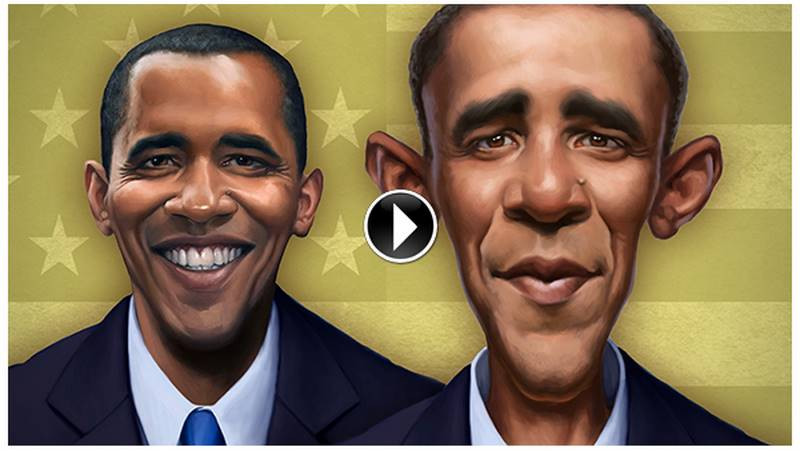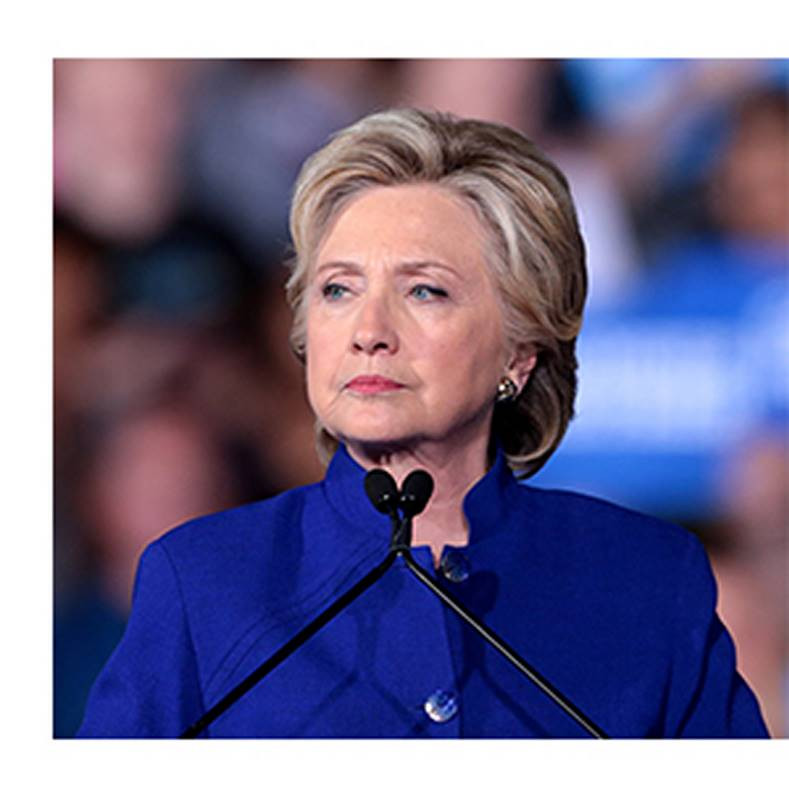Solving the Exaggeration with a Checklist
In [part 1] of this course, we learned that the first step in the caricature process was to do lots of thumbnail sketches to find the right exaggeration choices. But there is another way. Instead of doing thumbnail sketches, you can create a checklist or a “to do list”. Just a written list of all the distinctive elements of a person’s likeness that make them different from the average.
[embed "how to exagerate & thumbnail sketch drew barrymore]


Start the list by describing the big shapes and then move on to the details. Then draw all of the items on the list. This simple technique is one that you can use when you have trouble caricaturing a difficult face or don’t know which way to exaggerate. Writing a list gives you a gameplan to follow and engages the more analytical and logical left side of your brain to figure out a person’s likeness. Sometimes as artists, we could do with a little more left brain engagement.
You may find that you work better when you organize your thoughts first by putting them down on paper and making clear decisions about your subject's likeness before you start drawing. Because when you start drawing, the fear of failure can cloud your judgement and make your exaggerations timid. There's no pressure when you're just writing words on a list!
Procedure
Remember, the checklist is what you'll be creating instead of a thumbnail sketch. When it's done, you'll jump right into the rough sketch, going down your list as you draw each feature you described. So grab some paper and let's get started.
Our subject for this demonstration is Hillary Clinton. She has a tendency to look very different depending on the angle and her expression, which can make it very difficult to caricature her. So, once I settled on this reference photo, I came up with the following list of distinctive features:

All of these traits are going to be important to capturing her likeness. But before drawing, let’s condense my observations to only the specifics. So I’ll look through my description, pull out all the adjectives and place them next to the physical features they describe. Here is the essence of my list:

So these are the goals I’m setting for myself in this caricature. And remember, I’m treating this drawing as my rough sketch. The checklist serves as a replacement for the thumbnail sketch and allows you to skip that step. The creative problem of how to exaggerate is not done while your drawing. It’s done in your head, while you’re making the list. So this lesson isn’t really as much about drawing as it is about getting you to think critically about your subject and to plan your strategy.
This exercise will hopefully help you get more left-brained and analytical about your process. And some artists tend to work better that way. A written list helps you analyze your subject and crystallize your observations first so that you have guideposts when you draw and not just a vague idea of what you want to do. When just looking at a photo of your subject and trying to analyze everything visually, you might get conflicting thoughts about which way to go. But look at the finished list as your assignment. You HAVE to hit all of the features on it in order to complete it. Now, it may not always work out in the end. If that's the case, make a new list with slightly different decisions and see how the resulting drawing turns out.
The more experienced you become at caricatures, the more you will be able to make these lists mentally, as you study your photo reference or the model sitting in front of you. But if you're new to the art form or just find yourself not able to sketch a decent likeness, this technique can help you focus your efforts and improve your exaggeration choices.
Check out the [premium caricature course], where you’ll find a detailed demo of my Hillary Clinton drawing. You’ll also find several more videos where I explain why I make my exaggeration decisions and then create checklists for many different character types.

Assignment
To practice what you learned today, make your own caricature checklists. You can use your own photos or the celebrity photos provided in the premium course. A good strategy for making your list is to start with the big shapes and then move on to the details. And don’t just describe the size of things. Try to figure out if the features are crooked, square, round, close together, or far apart.
